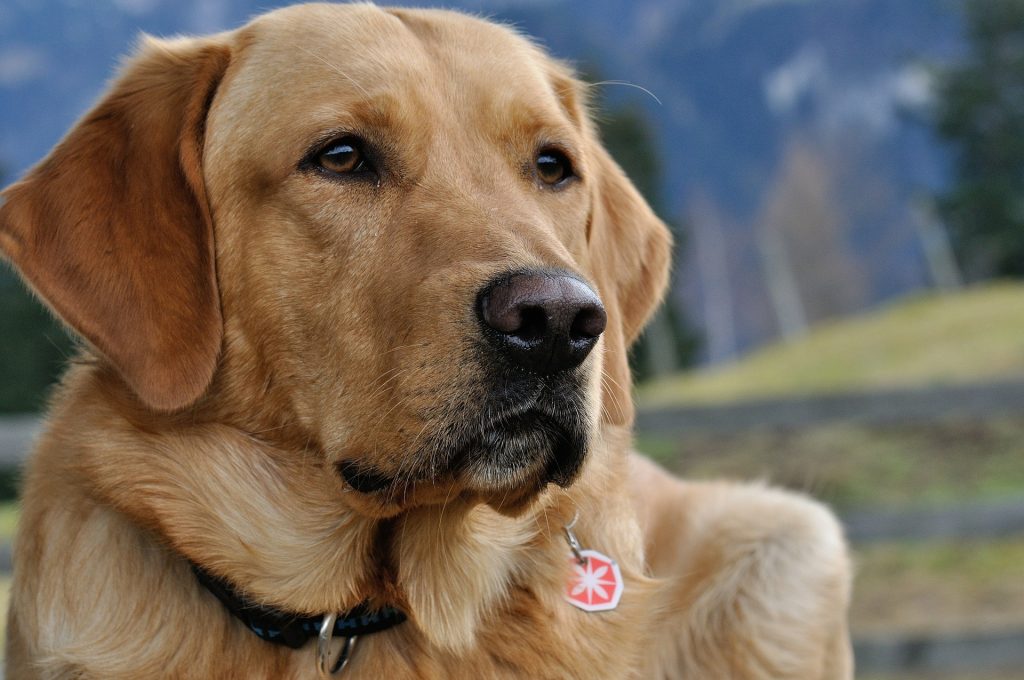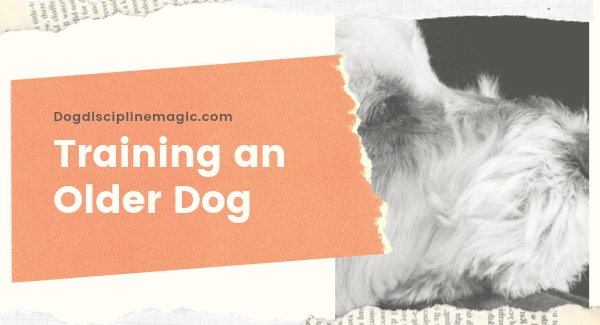"Old dogs are smart, and yes my friend, they can learn new tricks. Forging a better, healthier life-long bond with your adult dog is exactly what's going to happen when he learns how to behave correctly... "
Safety First
Before we get in to some of the details on how to train an older dog, it’s time to talk about safety.
If the dog you are going to train is a senior and you plan on some strenuous activities with them, it is highly advisable to have them checked out by your vet, according to the AKC.
You do take your four legged loved ones in for an annual checkup right?? Rigorous training after they’ve been given the medical thumbs up only makes sense for their well-being.
Leash Training For Your Adult Dog
Here’s the scoop – leash training shouldn’t be a fight, a wrestling match, or a battle of wills. If you get the correct equipment for leash training, it will give you the upper hand, and allow your dog to learn how to go on a walk correctly just that much faster.
The key to leash training, and effectively training an older dog is to use a training collar or training harness.
*PLEASE NOTE: NEVER use a shock collar to leash train your dog, no matter who tells you that it’s ‘fine’ to do it!
What you need is to use a metal choke chain or prong collar. When you use these training devices correctly, it’s neither dangerous, not cruel. They are also very effective in teaching your dog not to ‘pull’ on the leash while walking him.
For small or medium sized dogs, a simple choke collar usually works best. For larger dogs, prong collars are a safer bet.
When selecting a leash, you want to make sure that it’s leather or tightly wound fabric. Never choose a ‘retractable’ leash as they are dangerous and unpredictable.
When leash training an older dog, you need to know that your dog isn’t going to immediately walk calmly beside you at first asking. It’s going to take some practice and some patience, but eventually he will get the hang of things which will make your walks with him far more pleasant in the end.
While using a training collar, there is a right way and a wrong way to give leash corrections.
The ‘right’ way to give a leash correction is by giving what is called a ‘pop’ on the collar. At the exact same time you give his collar a ‘pop’ you need to give him a verbal command.
A ‘pop’ is a quick sharp tug on the leash that tightens his collar for a split second, then releases it right away.
This is effective in getting your dog’s attention, but it won’t hurt him. If you are leash training a larger dog, and utilizing the prong collar, you just have to make the ‘pops’ lighter and faster, as the prongs will quickly get your dogs attention so you needent be nearly as forceful.
The WRONG way to utilize your choke or prong collar is forceful or extended yanking or choking of your dog. This is a BIG NO NO, and it will really hurt him and possibly permanently damage him.
You love your dog, and you want him to learn his lessons, but you don’t want to hurt him. Don’t be overly forceful when leash training your dog.
In contrast to a choke collar, if you are training with a harness, firm, gentle pressure is exactly what you need to get the point across to your dog. Once again, no ‘yanking’ is going to be necessary.
Instead of taking your dog out on the ‘mean streets’ to start his leash training regimen, its a great idea to start his leash training at home, right in your own backyard.
Have your dog sit by your left leg, and don’t allow him to pull away or to start walking forward until you’re ready. If he starts moving forward when you aren’t ready, give him a short collar ‘pop’ and at the same time say ‘Wait’.
Once your dog becomes still again,then you can then step forward and tell him ‘Let’s go’!
Your aim here isn’t a long walk. At this point, even just a few yards without leash pulling is great. If he starts to pull, yank or lunge just stand still, give a quick collar pop, and tell him to ‘wait’ once again.
Only move forward when he is no longer pulling and is standing still. What this does is quickly teaches your dog that when he moves too quickly and starts pulling on the leash, you stop. He won’t want to stop so he will learn to slow things down.
How To Socialize Your Adult Dog
Socialization is one of the most misunderstood (as well as the most neglected) aspects of dog training. The thing is, it’s actually one of the most important things that you can ever do for your dog.
When you are socializing your dog, all that you are really doing is teaching your dog to be comfortable around other pets, other people and other things. If your adult dog has never been properly ‘socialized’ there may be a number of things that already scare him. This can be one of the real challenges when trying to socialize an older dog.
Socialization of your adult dog can move forward, with practice. It’s also advisable that this part of your dogs training take place under the care of a professional, possibly in a group setting.
Some dogs warm up to others quickly, while others never seem to get the message at all.
Breed characteristics also play a strong part in socialization, as do ingrained behaviors and your dogs upbringing.
Some dogs may be naturally calm and confident in social settings, while others can be nervous and anxious. Others still can be aggressive.
Being aggressive with your dog is something you definitely DO NOT want, and something that you need to aim to correct sooner rather than later. Socialization builds confidence and a calm demeanor in your dog.
REMEMBER:
Don’t push your dog too far or too quickly out of his comfort zone. Socialization for your adult dog should always be a fun and pleasant experience.



